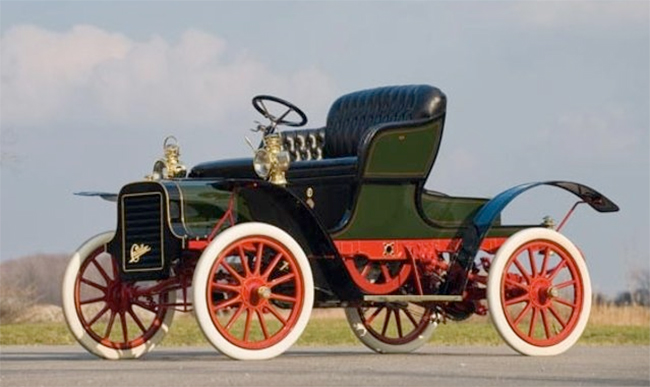Henry Leland lived, fought and lost by his principles
The generation of people who launched the U.S. auto industry could largely be considered Civil War baby boomers. Henry Ford, William Durant, Walter Flanders, Alexander Winton, John North Willys, Walter P. Chrysler and many others born in the 1860s and ‘70s generally got their training in the modern and industrialized cities of the late Nineteenth century. To them, Henry Leland, the lean, grizzled Vermonter with a twinkle in his eye, must have seemed like the fogiest of fogies. After all – he’d voted for Lincoln and was rejected for service in the Union Army – and many of the others would go on to see the end of World War II.
But while Leland may have been born early, he was also born close to what came to be called Precision Valley, a center for machining along the Connecticut River valley. At the age of 14, he left home in search of technical employment, ending up working at an armory in Massachusetts, where ideas like the production line and interchangeable parts were being pioneered.
He was reportedly turned down for the Union Army, although he would have been 18 when the Battle of Fort Sumter was fought in 1861. After the War, he moved down to precision machine tool makers Brown and Sharpe in Rhode Island, rising through the engineering ranks into a national sales position, which took him to Detroit. Shortly thereafter he set up his own Detroit precision tool and grinding shop as Leland, Faulconer and Norton, making parts for future carmakers including Pierce and Pope. In 1896, they began producing their own gasoline engine.
It was Leland’s reputation that, as the man to turn to when thousandths mattered, motivated Ransom Eli Olds to seek him out. Olds needed help with his transmission problems and Leland built him a new one. Leland then vastly improved Olds’s new “Little Hercules” engine, which was rejected as being too expensive.
Leland got another chance to get into the nascent auto industry the following year when, as a liquidator of the Detroit Motor Company, he talked the board, minus one unhappy member named Henry Ford, into reorganizing as a new company renamed after the city of Detroit’s founder: Cadillac.
Cadillac very quickly came to reflect Leland’s drive for mechanical perfection, famously shipping three cars to the Royal Automobile Club in London, where they were tested, disassembled and reassembled with all the parts scrambled, and tested again, proving the highest degree of interchangeability. General Motors purchased Cadillac in 1912, retaining Henry Leland as President and General Manager. However, by 1917 GM’s President William Durant and Leland had a falling out over the production of engines for World War I, which Leland supported and Durant rejected. With his son, Wilfred, and many poached Cadillac employees, Leland formed a company to manufacture military engines, and named it after the first man he ever voted for, Abraham Lincoln.
Lincoln Motor Company built some 6,500 V-12 Liberty aircraft engines but at the end of the war, they had their $10 million contract abrogated by the War Department, leaving them with expensive facilities and a huge tax bill. By the time Lincoln reorganized as a car company in 1920, their styling was behind the times and the luxury market was soft. Further tax liabilities forced them into receivership in 1921, the same year their first car hit the market.
Wilfred Leland and Henry Ford, no friend of Henry Leland’s, entered into secret negotiations not only to save the company but to protect Lincoln’s shareholders. Ford bought the company and kept Leland on, but it was doomed from the start.
Ford immediately began demolishing Lincoln, literally: Within two weeks he had Leland’s offices demolished, and began removing Lincoln’s expensive precision machinery and replacing it with inferior parts and tooling, as well as purging long-time Leland employees. On June 10, 1922, five months after the acquisition, Ford’s Executive Secretary Ernest Liebold arrived at the factory to demand Henry and Wilfred Leland’s resignation, and had the 79-year-old removed from the premises.
Henry Leland spent the next nine years of his life in and out of court in an effort to compel Ford to keep his promises to Lincoln’s stockholders. Ford being Ford, he fought it to the Michigan Supreme Court, and won.
Despite his vision and success, Leland’s philosophies weren’t rewarded in the 20th Century. First Durant, then Ford, rejected his standards as incompatible with their ideas about simply selling cars as efficiently as possible. Up to his death at 89 in 1932, Henry Leland fought not just for excellence, but for the notion that a man should do his best in all things, and that he should keep his promises at any cost.
People like claiming that Henry Leland was a broken man, after three of his companies were destroyed. A man who never gave up isn’t a broken man, though. Leland may not have won, but, like his hero Lincoln, he went down fighting.
Hagerty’s Essentials is an ongoing series that helps introduce enthusiasts to people, places and things that every well-rounded car lover should know. Rather than being in-depth, Essentials is a quick take giving you a conversational knowledge and ultimately, an idea of how the whole fits together.


